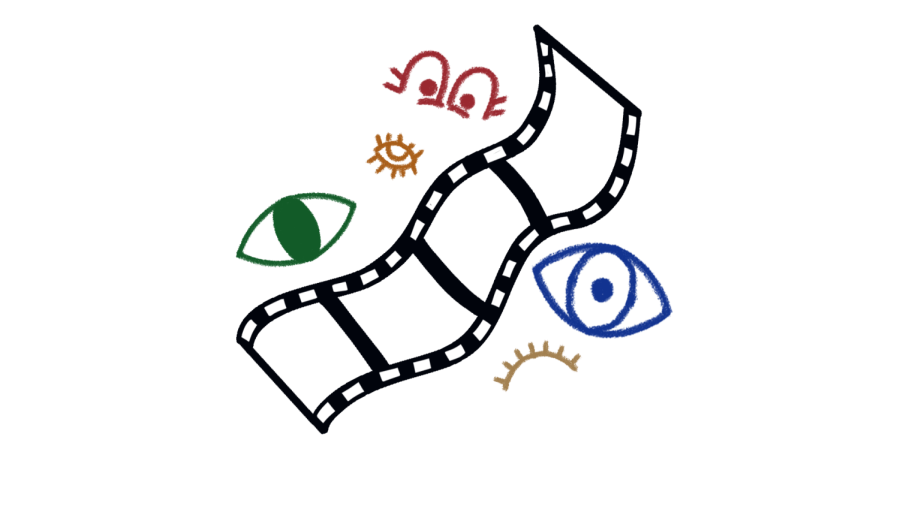Maxfield: Utah’s Empathy Crisis Rivals its Sexual Offense Crisis
Lynda Maxfield says that Utah’s treatment of sex offenders is a crisis of empathy. (Photo by J. Prather | Daily Utah Chronicle)
April 14, 2020
Over 2,000 convicted sex offenders make up roughly one-third of Utah’s prison population, and another 5,000+ Utah residents are required to register as sexual offenders. These statistics frighten Utah lawmakers who propose fear-based policies to further restrict those who have committed sexual crimes and served time, including those who have received treatment and pose a low threat. They fail to propose bills focused on increasing education that might potentially intervene before someone’s behavior accelerates, leading to an arrest.
The public often struggles to differentiate behaviors. For example, many people are unaware that the sexual exploitation of a minor is broad and includes both “hands-on” and “hands-off” offenses of anyone less than 18-years-old. It is similarly difficult to appreciate that recidivism rates are often lower than many people believe. This phenomenon has led state Rep. Val Potter to sponsor legislation that calls for even more restrictions. This new law prohibits registered offenders from accepting a minor into their home or serving as a coach, manager or trainer to a minor.
Reforming the Sex Offender Treatment Program
In 2017, the Sex Offender Treatment Program underwent an exhaustive audit. Since then, the Utah Department of Corrections has implemented several positive changes to the SOTP. I spoke at length with Programming Deputy Warden Greg Hendrix about the changes.
The program no longer takes a ‘one-size-fits-all’ approach. Old, punitive and shame-based approaches like plethysmography have been replaced by new, evidence-based practices adopted from the University of Cincinnati. Hendrix shared that in Utah people now go through dual risk-assessment tests before being assigned to one of six program pathways — “hands-off” or no contact, low-risk, Spanish-only, developmentally delayed, Spanish developmentally delayed or highest risk.
The Utah State Legislature failed to introduce any bills in the 2020 general session regarding Compulsive Sexual Behavior Disorder, though it was adopted by member states at the World Health Assembly in May 2019. Given Utah’s sexual offense crisis, this inaction represents broad negligence. Utah’s harsh laws alone are ineffective and do not reduce offensive sexual behavior.
Until lawmakers address CSBD — a root cause for many offenders — all Utah residents remain at risk. Some will become new victims. Others will become new offenders as their sexually compulsive actions may escalate into offensive behaviors. Utah schools and communities need more robust sex-ed programs that include training how CSBD can escalate, be identified and treated. Utah’s outdated sexual violence primary prevention plan must also be updated to address this issue. Finally, our fear-based culture must shift from “us vs. them” to an “us and them” mentality, considering that most offenders will return to society.
When asked what legislative changes could help the SOTP most, Hendrix offered a few suggestions, and two are particularly interesting. First, an increase in funding. The program budget hasn’t increased since 1996, yet the number of convicted sex-offenders continues to grow. Second, Utah judges should trust the science behind the newly implemented risk assessment tests and require offender evaluations prior to sentencing. This is an important first step toward treating low-risk offenders outside of prison. Alternative treatment is critical because studies show that “using high levels of treatment with low-risk offenders … can actually increase recidivism.”
SOTP changes following the 2017 audit have, according to Hendrix, eliminated the previous backlog of offenders waiting for treatment. They are now able to schedule timely SOTP dates once inmates have a release date. Treatment still begins after incarceration because the mindset required to survive in prison differs substantially from the one required for treatment.
Participation in a 12-step sexual recovery program while incarcerated may be a helpful precursor to completing the SOTP. But while incarcerated substance abusers have access to Alcoholics and Narcotics Anonymous, Hendrix confirmed that no 12-step sexual recovery program is currently available to inmates. However, he welcomes a prison program so long as eligible volunteers will commit to support it and can pass the required background checks. I reached out to some Utah S.A. Lifeline members about this gap and they express a strong willingness to create a change.
Many limitations are already in place for registered sexual offenders. This new law will cause these people to face even more barriers to safe and successful societal integration. The law’s blanket-statement language prohibiting a person on the registry from accepting a minor in their home goes too far. Better language, designed to protect everyone, would have been inclusive. It would have treated those required to register with dignity while also protecting the vulnerable. A simple solution could have been requiring a responsible adult who is not on the registry to be present.
Post-release employment is already a challenge. Restrictions in the law prevent these people from accepting or continuing employment at places where their responsibilities include instructing and supervising minors. Some companies, such as popular food chains, have hired registered offenders. These same companies also frequently hire minors. This law effectively forces employers to demote or potentially fire currently employed registered sexual offenders who work in any supervisory capacity.
Heavy residency restrictions are also already imposed on registered offenders, both in Utah and throughout the nation. Many rules undermine the potential of a person to move forward in life, hindering them from leaving their mistakes in the past.
An Empathy Crisis
Filmmaker Matt Duhamel has assessed that society is experiencing “an empathy crisis.” His Not For Rent documentary film explores struggles that sex offenders and other felons experience when leaving prison and rejoining society. Even after successful completion of all state-required treatment programs, their housing applications are often denied due to their past.
All Utahns, including incarcerated and released offenders, are people. Many of us seemingly fail to recognize this fact. While our civic duty sometimes requires us to sit on a jury, our role in providing judgment is temporary. Once offenders are released, the time for judgment has passed.
Instead of fearfully searching maps to identify the location of registered offenders, responsible adults should investigate if any do live nearby — then knock on their door and make a polite introduction. These people will not attend the neighborhood barbecue, but there is no reason a kind adult neighbor cannot drop by with a plate of food for them. Dieter F. Uchtdorf’s call to “lift where you stand” directly applies to how we treat released offenders — we can help lift both victims and offenders in our communities. Being a neighbor is enough. No one needs to wait for a church calling to show others kindness.
It’s wrong to presume to know who a person is based on their previous bad decision, even if it is a crime. And, while offenders lost a piece of their humanity due to their actions, those who wrongfully pass judgment also lose some of their humanity.
Recently, one of Utah’s registered “hands-off” offenders agreed to speak with me about his experiences before, during and after his arrest. He went through SOTP before the 2017 audit and survived the shame-based process, though suicide was a persistent temptation. I appreciate his honesty in sharing and thank him for trusting me with his story.
Although he was first introduced to sexual behavior at the tender age of six, he was a mature adult before recognizing that his responses to early exposure were a toxic, compulsive pattern. He doesn’t defend any of his criminal or non-criminal behaviors. Instead, he takes full responsibility for his actions. His story strongly supports the need for a societal change in how we talk about hyper-sexuality, “sexual addiction” or CSBD. Had someone been aware of his early experiences and helped him navigate them, he would not be a registered offender today.
Sadly, he is no longer welcome to participate fully in The Church of Jesus Christ of Latter-day Saints, the faith he was raised in and still holds in high regard. Indeed, he longs for a return to full fellowship. What is a church for if not a haven for honest, imperfect humans? While the church requires high moral standards of its members, it certainly is not the museum of saints it often pretends to be.
Utah’s pervasive unwillingness to openly discuss sexual health and CSBD cannot be overlooked when identifying the societal factors which may account for the state’s continued rise in sexual offenses. We must fill existing knowledge gaps with education and community resources. We must identify the early warning signs and teach all Utahns to spot them if we hope to change the tide and reduce sexual offenses — and slow the development of CSBD.







